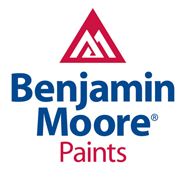Discover a Flawless, Factory-Finish for Your Metal Surfaces with Unmatched Durability and Efficiency
For property managers and homeowners who demand a superior, long-lasting finish for metal fixtures, traditional painting methods often fall short. They can be messy, wasteful, and result in uneven coverage riddled with drips and brush marks. Fortunately, there’s a modern solution that delivers a pristine, durable coating every time: electrostatic painting. This advanced technique leverages the power of physics to create a smooth, resilient finish that revitalizes everything from industrial machinery to residential railings with incredible efficiency.
What is Electrostatic Painting?
Electrostatic painting is a specialized coating process that uses an electric charge to apply paint to conductive surfaces, primarily metals. The principle is simple yet ingenious: opposites attract. An electrostatic spray gun gives a positive electrical charge to the paint particles as they are atomized. The metal object being painted is grounded, giving it a negative charge. This creates a powerful magnetic attraction, pulling the positively charged paint particles directly onto the surface.
This powerful attraction is so effective that the paint literally wraps around the object, ensuring a complete and uniform coat, even on complex shapes and hard-to-reach areas. The result is a seamless, factory-like finish that is incredibly durable and aesthetically pleasing, making it an ideal choice for both commercial painting contractors and residential projects.
The Unmatched Benefits of Electrostatic Coating
Property managers and discerning homeowners choose electrostatic painting for its significant advantages over conventional methods. This process not only delivers a superior look but also offers practical benefits that save time and money.
Flawless and Uniform Finish
The magnetic pull ensures a consistent, smooth coating free from drips, brush strokes, or streaks. The “wrap-around” effect covers every angle of intricate items like fences and railings perfectly.
Exceptional Durability
The electrostatic bond creates a finish that is highly resistant to chipping, peeling, corrosion, and daily wear and tear. This longevity means less maintenance and fewer repaints over time.
Efficiency and Minimal Waste
With transfer efficiency rates up to 95%, nearly all the paint adheres to the target surface. This drastically reduces overspray, saves on material costs, and is better for the environment.
Fast and Convenient
The application process is quick, and the paint often dries to the touch in just a few hours. This minimizes downtime, allowing your business or home life to return to normal with little disruption.
Did You Know?
The attraction between the electrostatically charged paint and the grounded object is about 75 times stronger than gravity! This powerful force is what enables the paint to defy gravity and wrap around complex objects for total coverage.
The Electrostatic Painting Process: A Step-by-Step Look
A professional electrostatic painting project is a systematic process designed for safety, efficiency, and superior results. At Spectra Painting, we follow a meticulous procedure to ensure a perfect finish every time.
Step 1: Surface Preparation
This is the most critical stage. The lifespan of the coating depends heavily on proper prep work. Our team thoroughly cleans, degreases, and sands the metal surface to remove rust, old paint, and contaminants. For certain projects, this may involve our expert sandblasting services to create the ideal profile for adhesion.
Step 2: Masking and Grounding
We carefully mask off all surrounding areas to protect them from any potential overspray, though the process itself produces very little. Then, the metal object to be painted is securely connected to an electrical ground.
Step 3: Paint Application
Using a specialized electrostatic spray gun, our technicians apply a positive charge to the paint. The fine mist is then sprayed towards the grounded object, and the magic of electrostatic attraction takes over, creating a smooth, comprehensive coating.
Step 4: Curing and Cleanup
The paint dries quickly, often becoming tack-free within hours. Full curing, which is when the paint achieves maximum hardness and durability, typically takes 24 to 72 hours. Our team removes all masking materials and leaves the site pristine.
Ideal Applications for Electrostatic Painting
The versatility of this technique makes it suitable for a vast range of commercial, industrial, and residential needs. It is the perfect solution for any conductive surface requiring a durable, high-quality finish.
Commercial & Industrial
- Metal Fencing & Gates
- Staircases & Railings
- Office Furniture (Filing Cabinets, Lockers)
- Elevator Doors & Frames
- Industrial Machinery & Equipment
- Storefronts & Window Frames
Residential & Historic
- Wrought Iron Fences & Gates
- Outdoor Patio Furniture
- Radiators & Vents
- Metal Railings & Staircases
- For historic restoration painting, it’s perfect for revitalizing original metalwork.
Your Local Red Bank Electrostatic Painting Experts
For businesses and residents in Red Bank, New Jersey, choosing a local contractor with deep expertise is key. Spectra Painting has been serving New Jersey since 1989, bringing unparalleled skill to every project. We understand the specific needs of our community, from protecting commercial properties against the coastal air to preserving the integrity of historic metalwork. Our team of professionals is equipped with the latest electrostatic technology to deliver flawless results that stand the test of time.
Whether you are a property manager needing to refresh the look of metal fixtures across a facility or a homeowner looking to restore a treasured wrought iron fence, our electrostatic painting services provide a reliable, high-quality, and cost-effective solution right here in the Red Bank area.
Ready for a Flawless, Factory-Perfect Finish?
Don’t replace your worn-out metal fixtures—refinish them with a durable, beautiful coating that lasts. Contact the experts at Spectra Painting today to learn more about our electrostatic painting services and get a free, no-obligation quote for your Red Bank project.
Frequently Asked Questions (FAQ)
Is electrostatic painting safe?
Yes, when performed by trained professionals, it is a very safe process. Professionals follow strict safety protocols, including proper grounding of all equipment and the workpiece to prevent sparks. The reduced overspray also means fewer volatile organic compounds (VOCs) are released into the air compared to traditional spray methods.
How long does electrostatic paint last?
The durability is one of its key benefits. A professionally applied electrostatic coating can last for 10 years or more in interior settings and 5-7 years on exterior surfaces, depending on environmental exposure and usage. Proper surface preparation is crucial for achieving maximum longevity.
Can you perform electrostatic painting on-site?
Absolutely. One of the greatest advantages of electrostatic painting is its suitability for on-site application. The process is clean with minimal overspray, allowing us to refinish large, fixed items like fences, machinery, and architectural elements with minimal disruption to your home or business.
What kind of surfaces can be painted?
Electrostatic painting is designed for any conductive material. It works exceptionally well on metals such as steel, iron, and aluminum. It is the go-to method for refinishing items where a durable, smooth coat is essential.
Is electrostatic painting more expensive than traditional painting?
While the initial equipment cost is higher for contractors, the overall project cost is often very competitive. The high transfer efficiency means less paint is used, and the faster application process reduces labor hours. When you factor in the superior durability and longer lifespan of the finish, electrostatic painting provides excellent long-term value.






